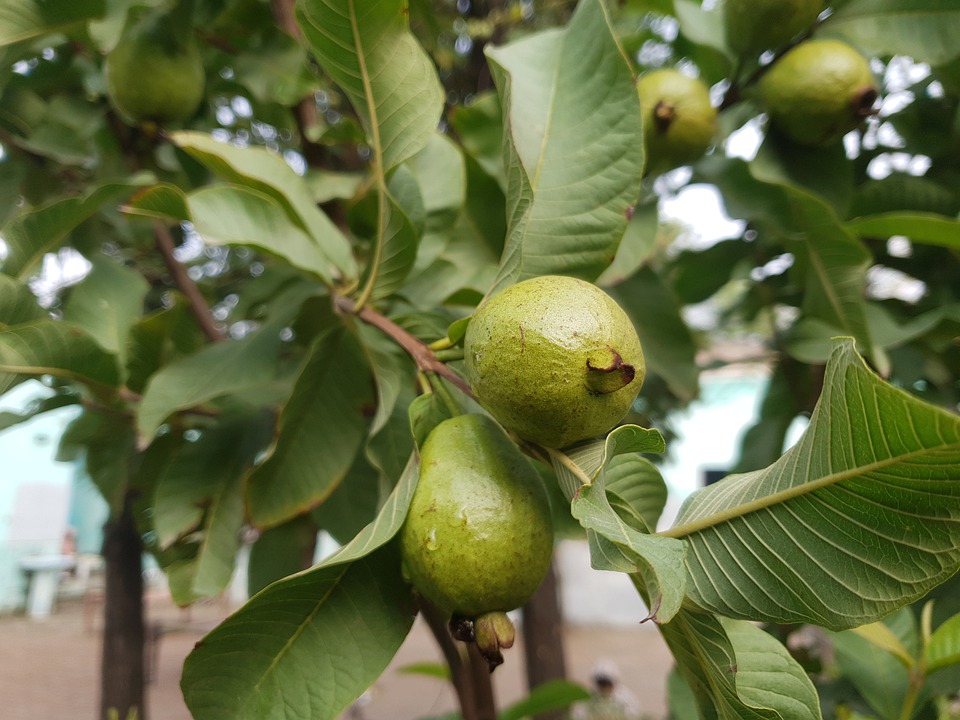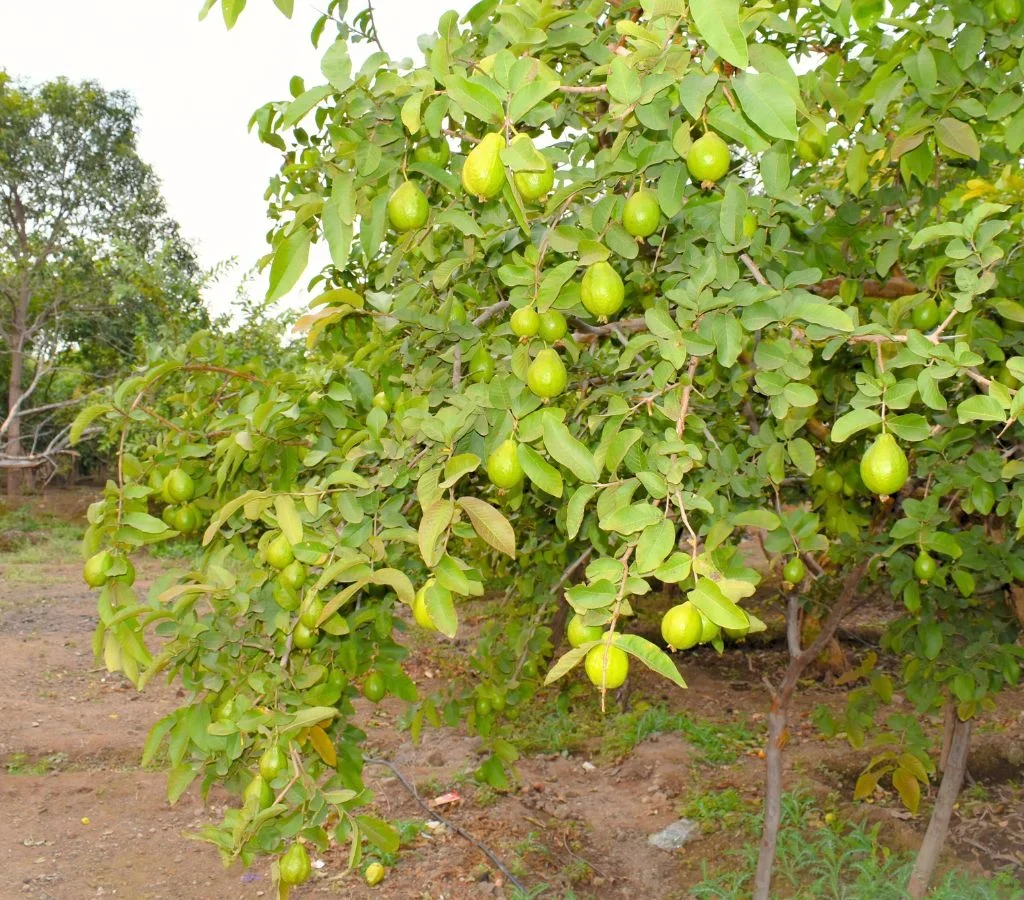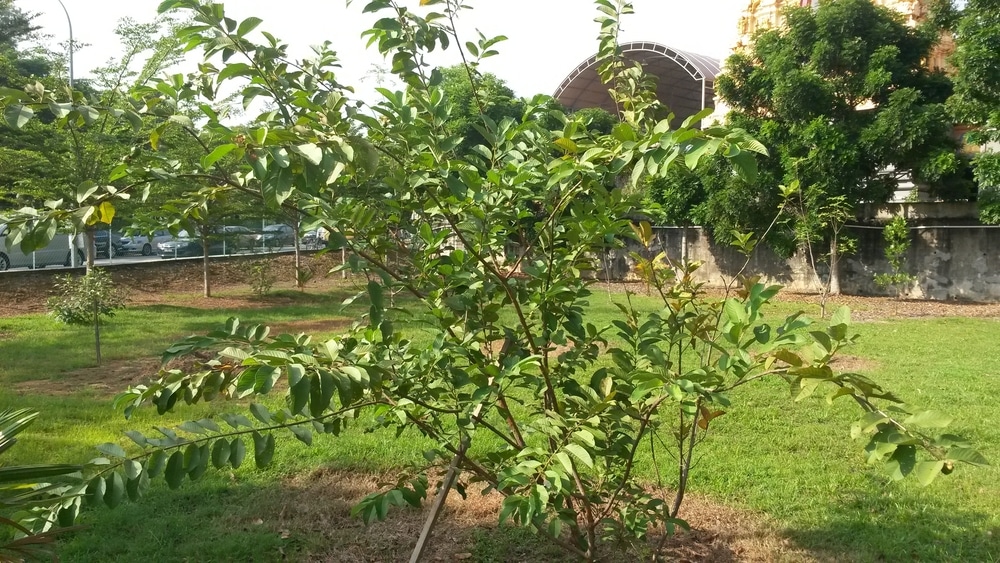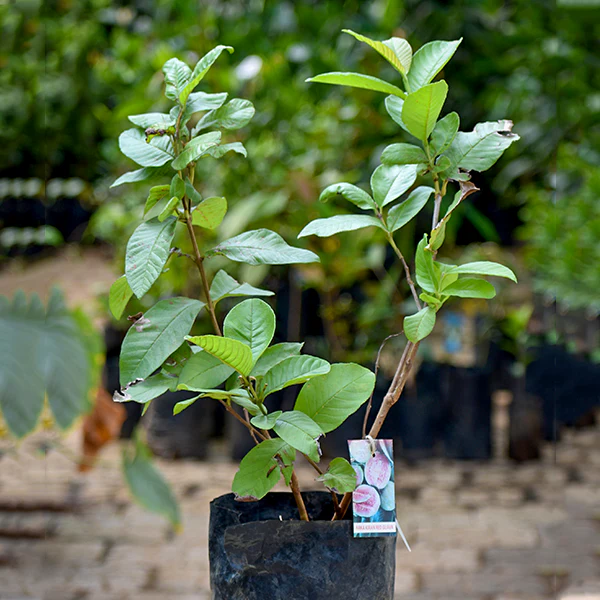The guava tree (Psidium guajava) is a hardy, tropical fruit tree known for its nutritious, aromatic fruits and adaptable growing habits. Originating in Central America and the Caribbean, guava trees are now widely cultivated in tropical, subtropical, and warm temperate regions worldwide. These evergreen or semi-deciduous trees are prized for their resilience, relatively fast growth, and the minimal care they require once established.
Yet, one of the key aspects that directly influences the growth, health, and fruit production of guava trees is watering. While they tolerate short periods of drought, guava trees yield best when provided with consistent, appropriate moisture.
This article will answer a crucial question:
How often should you water a guava tree?
We’ll cover watering frequencies for different ages and seasons, best practices, factors affecting water needs, signs of overwatering and underwatering, and useful care tips.
Understanding the Guava Tree’s Natural Habitat

To care for a guava tree effectively, it’s important to consider its native growing conditions:
- Native habitat: Central America, northern South America, and the Caribbean
- Preferred environment: Warm, humid climates with distinct wet and dry seasons
- Growth habit: Medium-sized tree, reaching 10–25 feet tall in cultivation, and over 30 feet in the wild
These preferences indicate that guava trees grow best in moist, well-drained soils with regular but moderate watering, mimicking the intermittent rains of tropical climates.
How Often Should You Water a Guava Tree?

General Watering Guidelines
- Newly Planted Guava Tree (First Year):
Water every 2–3 days for the first 4–6 weeks to help establish a strong root system.
Afterward, reduce to once or twice a week. - Young Guava Tree (1–3 Years Old):
Water every 3–5 days in warm, dry weather and once a week during cooler periods. - Established Guava Tree (3+ Years):
Water every 7–10 days in dry seasons, reducing or suspending watering during rainy periods. - During Flowering and Fruiting:
Increase watering frequency to every 3–5 days to maintain consistent soil moisture, which supports fruit development and prevents premature fruit drop.
Factors Influencing Guava Tree Watering Frequency
Several environmental and care-related factors affect how often your guava tree will need watering:
Climate and Season
- Hot, dry conditions or windy weather increase water loss, requiring more frequent watering.
- Rainy or humid conditions reduce water needs.
- During flowering and fruiting (typically spring to summer), guava trees require consistent, deep watering.
Soil Type and Drainage
- Sandy soils drain quickly and need more frequent watering.
- Loamy soils hold moisture better but still provide good drainage.
- Clay soils retain water longer and must be watered less frequently to avoid waterlogging.
Ideal soil is well-draining, fertile, and slightly acidic to neutral (pH 5.5–7.5).
Tree Age and Size
- Young trees require consistent watering for root establishment.
- Mature guava trees develop deeper roots and can tolerate short dry spells but still produce better yields with regular watering.
Tree Location
- Potted guava trees require more frequent watering (typically every 1–3 days in hot weather) because containers dry out faster than garden soil.
How to Check If Your Guava Tree Needs Water

Soil Moisture Test
Insert your finger 2–3 inches into the soil:
- If it feels dry at that depth, it’s time to water.
- If it feels moist, wait a day or two before checking again.
Using a soil moisture meter is also effective for consistent monitoring.
Leaf Condition
- Wilting, drooping, or curling leaves indicate water stress.
- Yellowing lower leaves can signal either overwatering or underwatering — check soil moisture to confirm.
Fruit Drop
If immature fruits drop prematurely, it may be due to inconsistent soil moisture.
How to Water a Guava Tree Properly
Deep, Slow Watering
Provide a deep soak so water penetrates the soil to a depth of at least 18–24 inches. This encourages deep root growth and resilience during dry periods.
Water at the Drip Line
Water around the tree’s drip line (the outer circumference of the canopy) where feeder roots absorb most moisture, rather than directly at the trunk.
Use Mulch
A 2–4 inch layer of organic mulch (straw, leaf litter, or wood chips) conserves soil moisture, suppresses weeds, and regulates soil temperature. Keep mulch 4–6 inches away from the trunk to prevent rot.
Morning Watering
Water early in the day to allow foliage and soil surfaces to dry by evening, minimizing fungal risks.
Seasonal Watering Chart for Guava Trees

| Season | Young Trees (0–3 yrs) | Mature Trees (3+ yrs) |
|---|---|---|
| Spring | Every 3–5 days | Every 7 days |
| Summer | Every 2–4 days | Every 5–7 days |
| Monsoon/Rainy | Reduce or skip if adequate rain | Reduce or skip watering |
| Autumn | Every 5–7 days | Every 7–10 days |
| Winter | Every 7–10 days | Every 10–14 days |
Adjust based on rainfall, soil type, and local climate.
Signs of Overwatering and Underwatering
Overwatering Symptoms
- Yellowing leaves
- Soft, mushy roots (root rot)
- Stagnant, soggy soil
- Wilting despite wet soil
Solution:
Improve soil drainage, reduce watering frequency, and trim affected parts.
Underwatering Symptoms
- Drooping, curled leaves
- Dry, cracked soil
- Browning or scorched leaf edges
- Poor fruit set and premature fruit drop
Solution:
Increase watering frequency, apply mulch, and monitor soil moisture daily during hot weather.
Best Watering Practices for Guava Trees

Install a Drip Irrigation System
Delivers water slowly and directly to the root zone, conserving water and preventing disease.
Ensure Good Soil Drainage
Avoid heavy, compacted soils and improve clay soils with organic matter.
Use Mulch Regularly
Mulch retains soil moisture and reduces temperature fluctuations, especially in hot or dry climates.
Water Consistently During Fruiting
Inconsistent watering can cause fruit cracking, drop, or poor quality.
Adjust Watering Based on Rainfall
Reduce or stop supplemental watering during periods of heavy natural rainfall.
Common Watering Mistakes to Avoid
- Overwatering during the rainy season
- Allowing soil to completely dry out in summer
- Watering too close to the trunk
- Frequent, shallow watering
- Neglecting water needs during flowering and fruiting seasons
Conclusion
Guava trees thrive with consistent, deep, and strategic watering routines tailored to their age, environment, and seasonal needs. While they’re relatively drought-tolerant once mature, guavas produce higher yields and better-quality fruit with regular and thoughtful watering.
In summary:
- Water young guava trees every 2–5 days.
- Mature trees typically need water every 5–10 days, depending on climate and season.
- Deep, thorough watering encourages deep root development.
- Always check soil moisture before watering and use mulch for water conservation.
By following these guidelines and adjusting based on local conditions, you’ll enjoy vigorous, healthy guava trees with plentiful harvests for years to come.




Leave A Comment